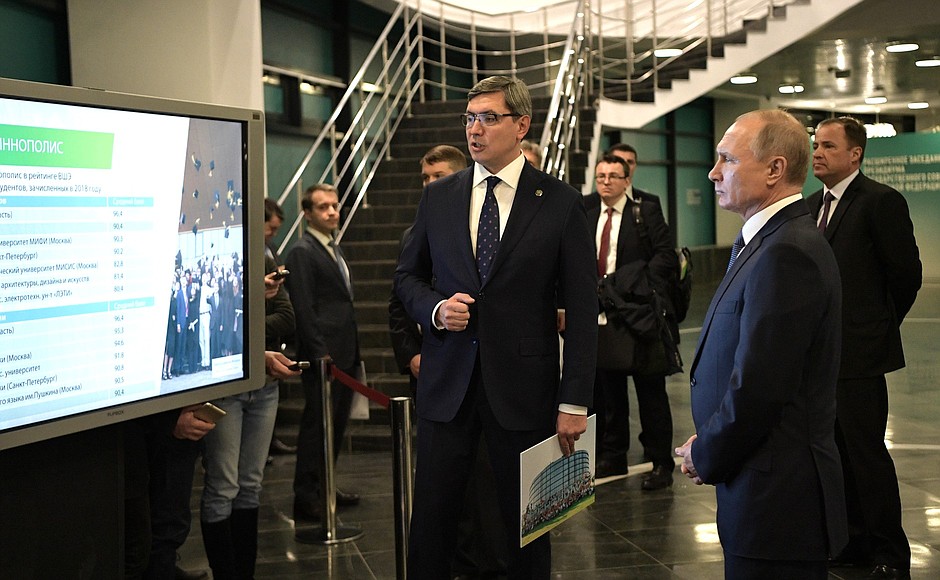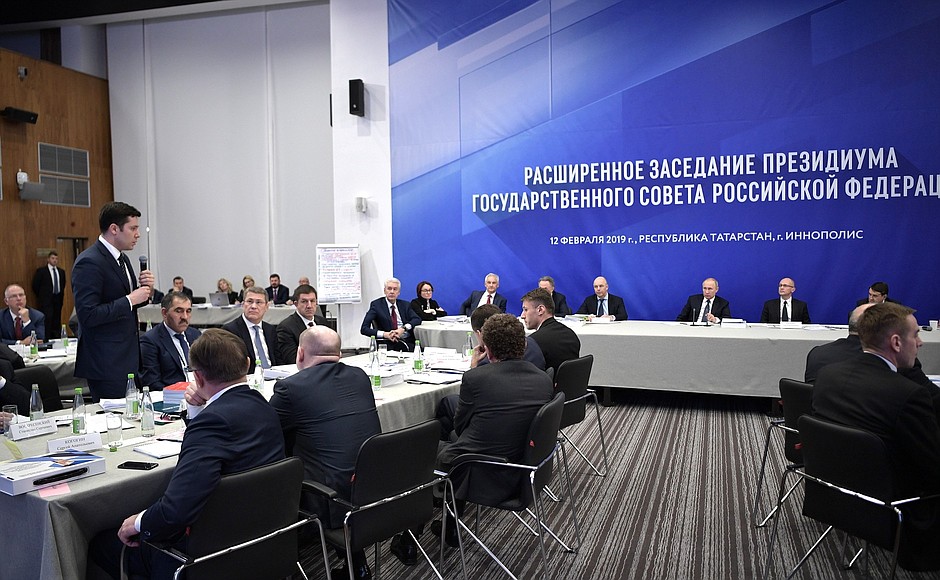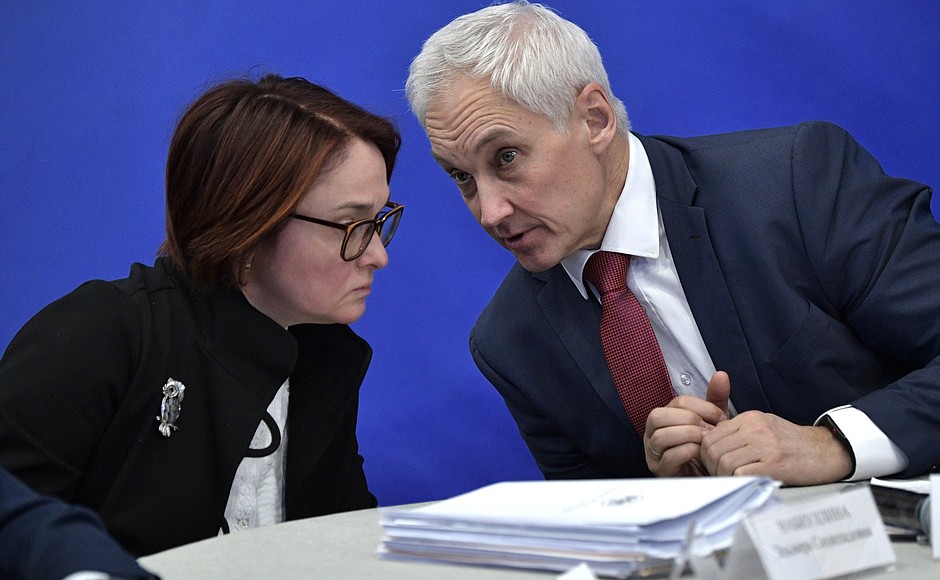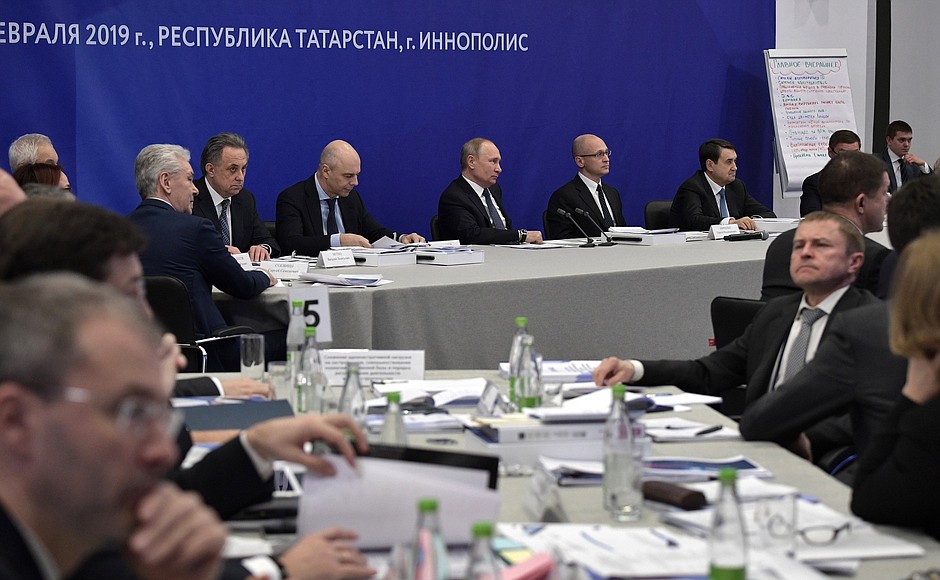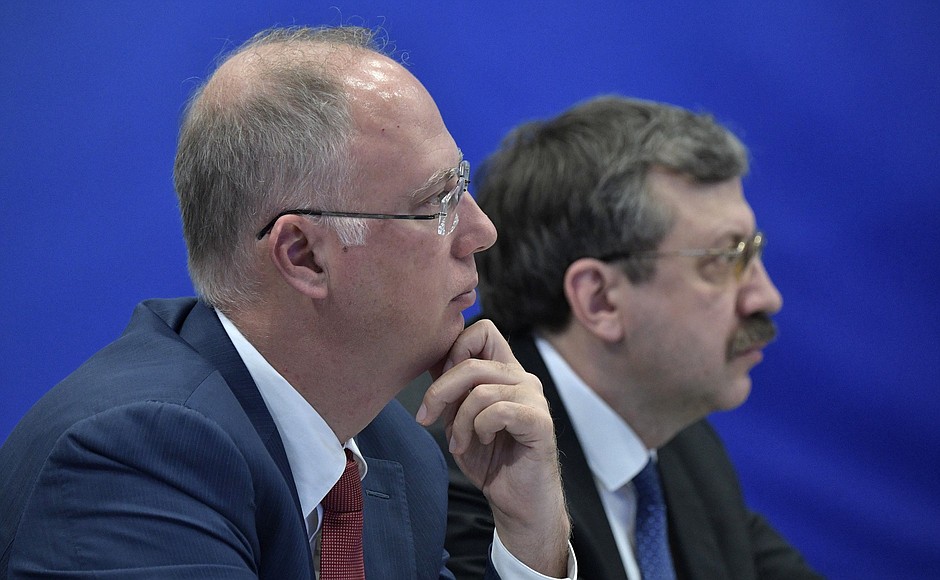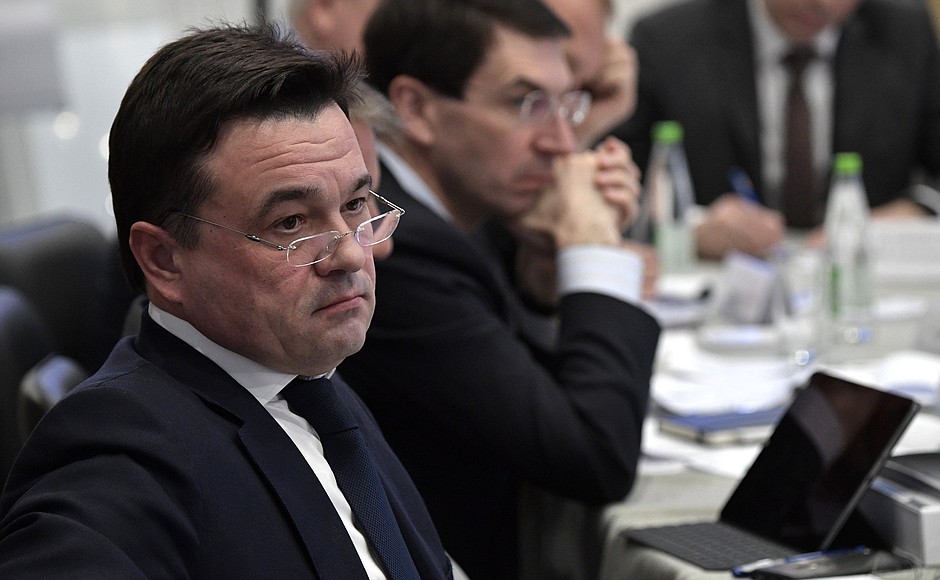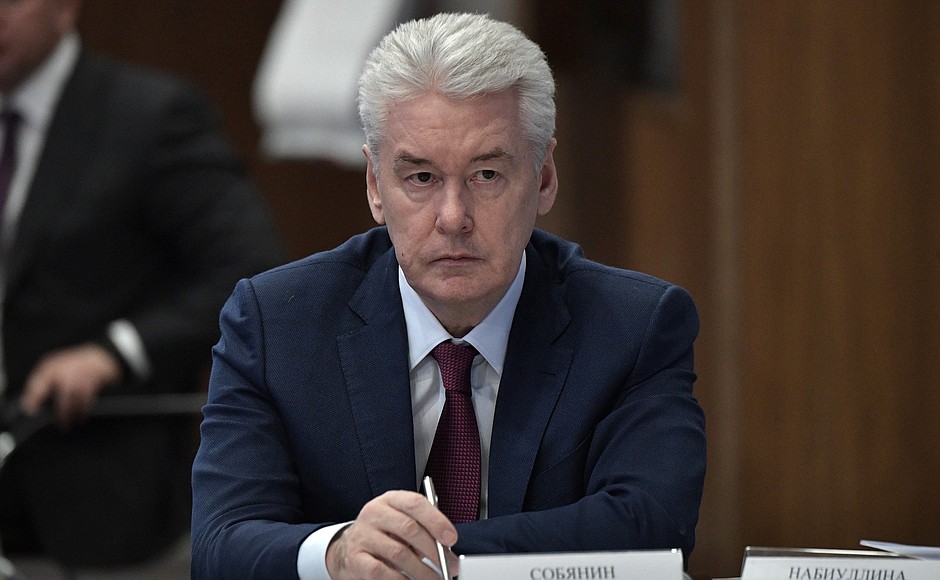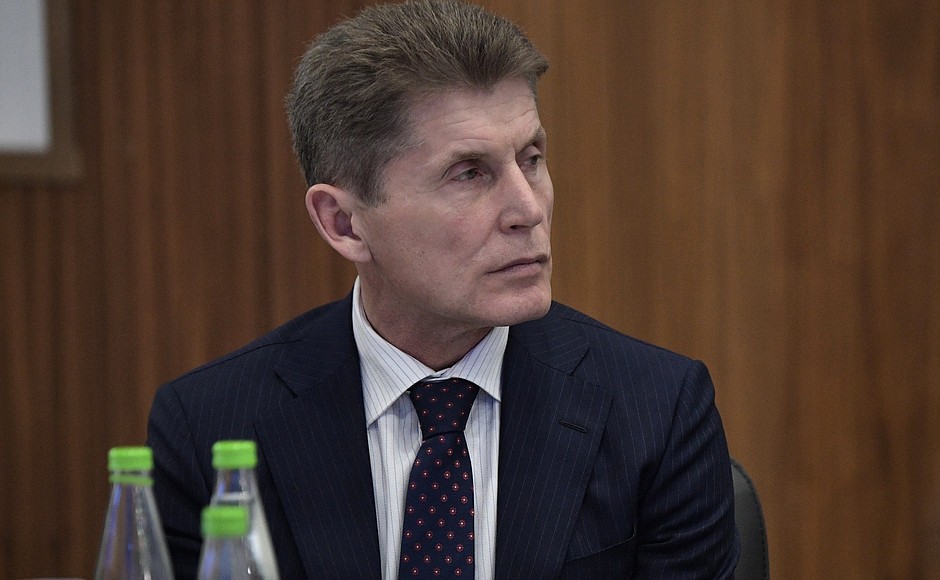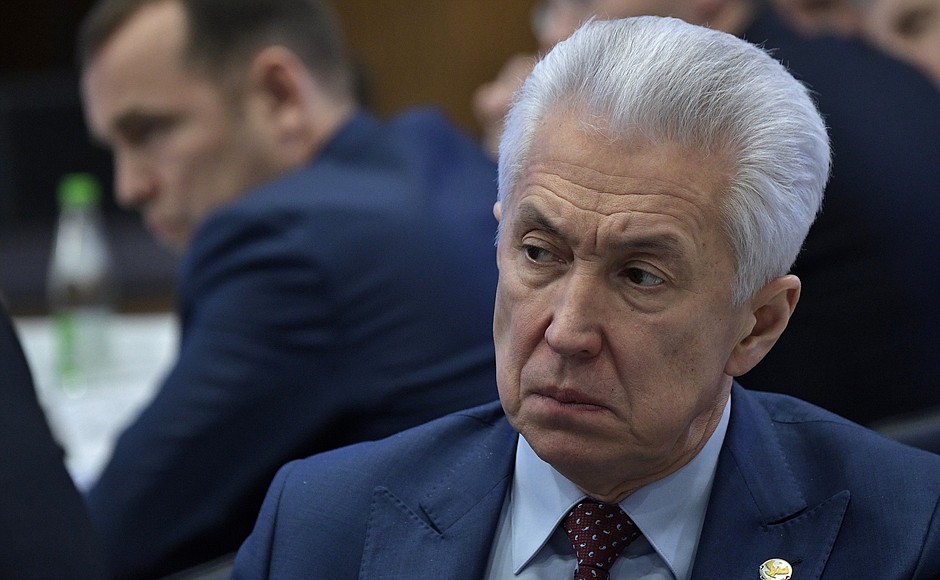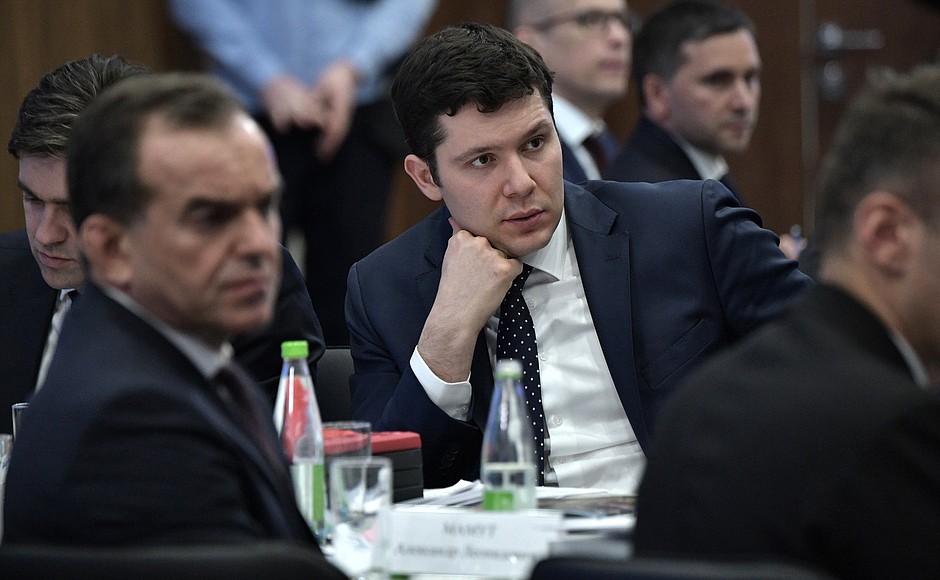A short presentation of Innopolis was held for the President before the meeting. Russia’s youngest city was established on June 9, 2015 to catalyse the national IT industry. The city’s master plan was designed by architect Liu Thai Ker from Singapore and implemented by a group of local architects.
Innopolis University, which forms the city core, focuses on IT and robotics education and research and has a tuition system that combines education, science together with business, which is unique for Russia.
The city has a special economic zone with incentives and tax relief schemes for investors and residents from the high-tech industries.
With 3,200 permanent residents, Innopolis has a daily population of over 4,500, who can enjoy a comfortable urban environment with education, healthcare, sports and entertainment infrastructure. The Popov Administrative and Business Centre is the main building in the Innopolis special economic zone and the city. It was designed as an innovation centre and is the main link between fundamental research and commercial production.
* * *
Opening remarks at the State Council Presidium meeting
President of Russia Vladimir Putin: Good afternoon, colleagues,
We are holding the second State Council Presidium meeting in the retooled format. Let me remind you that we have 16 permanent working groups headed by regional leaders on the key issues on the socioeconomic agenda of Russia’s development.
Over the last two days the main working group, ministers, agency heads and experts have been focusing on a topic that is important for every Russian. I mean the improvement of housing and how to make cities and towns more comfortable, take residential construction to a new level of quality and, of course, increase its availability.
Let me note that today the industry is in the process of serious changes, a phase of important reforms. Starting from July 1, there will be a new scheme of financing residential construction. It must be safe and not burdensome for people, protect them from unnecessary risks when purchasing residential real estate and also make it possible to form a more sustainable, professional and civilised foundation for relationships between market participants.
See also
The laws on residential construction are changing. The regulations, planning standards and rules must be transparent and suit construction firms but also work effectively and meet people’s demands in terms of living conditions and the quality of the urban environment above all. This is one of the reasons for introducing the Urban Area Development Standard.
And, of course, we must boost the dynamics of the construction sector and increase housing delivery. We must resolve the protracted problems in this area. We have gathered here also because (I will say this now because I met with representatives of public organisations, the construction sector and heads of republics and municipalities) we have a problem. We must ensure that construction volumes grow, while also switching to a new way of operating in the industry that is more complicated and more stringent. How can we resolve both problems? Switching to the new way and ensuring growth? This is not easy.
We have already resettled people (a considerable number) from dilapidated housing that was registered as such on January 1, 2012. Over a million people moved to new flats. This year we launched a programme for housing stock that became substandard between January 1, 2012 and January 1, 2017. Our task is to resettle residents from dilapidated housing, and keep ahead of the pace at which additional housing falls into disrepair in the meantime. In other words, we must resettle people from over two million square metres per year. And we must reach this level no later than 2023. Only in this way will we be able not just to patch up but really upgrade the country’s housing stock.
These tasks are reflected in the Housing and Urban Environment national project. As I have already said, we discussed its implementation before our meeting with the public, business and experts. Many issues and problem points were discussed. I will share with you some of them and some considerations about them. But I know you have been discussing them, for a second day now. I have already been told that your discussions were fairly heated and focused. So, apparently, I will not tell you anything new.
Nevertheless, I will repeat that a new financing scheme for housing construction will be launched on July 1. The role of banks will grow considerably. They will issue loans for specific projects and monitor the course of construction. I would like to draw the attention of the Government and the Central Bank to the following task: it is necessary to smoothly coordinate work with the developers and credit organisations, and to build and adjust all mechanisms so as to make this transition as smooth as possible for the industry and to motivate the banks to issue loans for the developers.
Here is an important consideration. Businesses and customers are concerned that switching to project financing will adversely affect comprehensive development leading to issues with opening socially important sites, which was mentioned earlier, and the developers will have a hard time dealing with it as there will not be enough resources. As you may be aware, under the new rules, it will be illegal to use customer money to build social infrastructure sites. I am here to listen to what you have to say about this.
However, I would like to reiterate that as we develop our cities and new territories, we should stimulate the development that will meet all the needs and demands of our people, including families with children and the elderly. No one needs outlying districts, which have no transport access to schools, medical centres or kindergartens.
There is one more thing that I would like to point out. There are over a million co-investment agreements out there. They must be implemented in full. We must protect the rights of defrauded real estate co-investors, who, due to unscrupulous companies, have lost their homes and savings, and some are left with nothing but debt. Here is what I have to say to the governors: you cannot delay dealing with these people's problems. They expect timely, strong and effective actions from you. There is successful experience with this, including here in Tatarstan. It is necessary to adopt these practices and to come up with new and effective measures, and this, too, I hope, will be discussed today.
Next, steady demand for housing is essential for the progressive development of the construction sector. In this regard, we must look at the situation in the mortgage market. We discussed this today as well. Not too long ago, it was around 9 percent, now it is two percentage points more, up to about 11 on average nationwide. I just spoke with the people – this is an expected outcome, in fact. I hope our forecast that this will be a short-term and one-time effect is true. To date, there is no reason to think otherwise. However, it is imperative to closely monitor this and stimulate the market accordingly.
Yes, last year the Central Bank raised the key rate, which, strictly speaking, was unavoidable. We knew it would raise rates given the decisions in taxation. But it was up by just a half of a percentage point, and also banks raise resources not only through funding from the Central Bank, but a number of other sources as well. There is simply no reason for a violent surge. As I said, it is necessary to monitor this closely and respond accordingly and in a timely manner.
Over 30,000 public spaces will be renovated within six years – parks, pubic gardens, waterfronts, walking areas. This is also a significant area of activity. The world’s best practices and our own experiences should be drawn on, including the experiences in Moscow, Kazan and other Russian cities that hosted the World Cup.
But you know, what I would like to say, addressing especially the regional heads, our colleagues from the regions: the representatives from the Russian Popular Front have just pointed at a very simple thing – the outskirts. Even thriving large mega cities oftentimes forget about the people living in the outskirts of the cities. Let’s go back to that issue.
In fact, so-called pubic space is inexpensive; it really does not cost much to do it properly. I draw your attention to that. This is absolutely right. These so-called bedroom communities must be provided with social infrastructure, kindergartens, hospitals, out-patient clinics and so on. But public space must have a human face – up-to-date and meeting today’s requirements.
We have to use leading design and architectural teams, especially younger ones, of course. We have these specialists including Arkhitektory.RF programme graduates. They are ready to offer their exciting cutting-edge solutions. We also have good universities that do well in training specialists. They must be used also. But the key is the participation of the local residents themselves in shaping the urban environments. People must be trusted to decide what our cities and townships will look like.
Of course, I also talked about that today – there are as many opinions as there are people. So the process should not lead to procrastination. However, if people are involved at the initial stage of drafting a project, it will be more efficient. People will become a party to the process. And if it goes this way, the work will be more efficient. Things are always like that, especially in this area.
If a certain project enjoys support from the local residents, it will always go more positively; this always helps. And attitudes will change. When people feel they are involved in the process, that they co-author a certain decision, the attitude towards the facilities built and spaces created will be quite different. It will be caring, accurate, careful. People will be grateful to you for that.
These issues were also raised at today’s meeting. We talked about this. I hope we will consider this, too.
<…>
